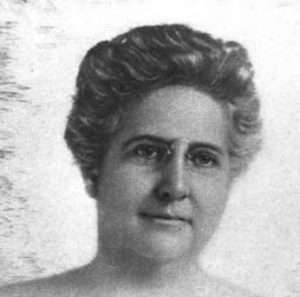The Ancient Burying Ground, the oldest historic site in Hartford, contains the remains of 6,000 men, women and children who settled the town.
But it might have disappeared were it not for the efforts of Emily Seymour Goodwin Holcombe, also known as the Gold Street Lady.
Beginning in 1640, anyone who died in town, regardless of race, religion or economic status, was interred in the Ancient Burying Ground. Not everyone could afford a tombstone, and most people didn’t have one. Only 563 stones marked graves in 1835, and today only 415 stones still stand.
Who’s Buried in the Ancient Burying Ground?
Buried in the Ancient Burying Ground are five early Connecticut governors; Hartford founders Thomas Hooker and Samuel Stone; Jeremiah Wadsworth, commissary general of the Continental Army; and Daniel Gardiner, the first white child born in Connecticut.
The stones themselves show the progression of the stonecarver’s art, from simple facts about the deceased to elaborate death’s heads with batwings.
The Ancient Burying Ground, though, is located right in downtown Hartford on Gold Street, across from the Travelers Insurance Company Tower and near an apartment building designed by I.M. Pei.
Real estate development had threatened to gobble up what remained of the Ancient Burying Ground when preservationists stepped in.
Daniel Wadsworth, son of Jeremiah, started the effort to save the Ancient Burying Ground in 1836. He led the campaign to erect a brownstone obelisk in the cemetery with the names of the founders on it.
Mrs. Holcombe
Then in 1892, Emily Seymour Goodwin Holcombe stepped in. She came from an old New England family and married another WASP, John Marshall Holcombe, who rose to president of the Phoenix Mutual Life Insurance Co.
Emily Holcombe started by organizing the Ruth Wyllys Chapter of the Daughters of the American Revolution in 1892. Four years later she began restoring the Ancient Burying Ground, no small task. It required widening Gold Street, demolishing several buildings and preserving the crumbling gravestones. She raised $100,000 for the project and on June 17, 1899 – Bunker Hill Day – 5,000 people came to the dedication of the restored cemetery.
During the ceremony, one city official praised Emily Holcombe. “If any man of my knowledge in Hartford had undertaken the task, there would have been nothing left of him but the footprints of those who had stepped upon him,” he said. He added that ‘official boards and public men, court committees and obdurate property owners, all bowed to the persuasiveness of Mrs. Holcombe.’
Colonial Revival
The Colonial Revival was in full swing then, and Emily Holcombe was far from done. In 1903, the descendants of Founding Father Oliver Ellsworth gave his house to the Connecticut DAR. Emily Holcombe furnished it with period antiques and established it as a museum.
When the Louisiana Purchase Exposition in St. Louis opened in 1904, the Connecticut State Building featured a colonial home furnished with restored heirloom furniture, Connecticut paintings and books on genealogy.
In 1909, Emily Holcombe helped save Connecticut’s Old State House, slated for demolition. Again she raised money for the project and argued for the building’s historic importance. She also persuaded the General Assembly to change Connecticut’s motto from the Nutmeg State to the Constitution State.
When Emily Seymour Goodwin Holcombe died in 1923, she was afforded the rare honor of being laid to rest in the Ancient Burying Ground.
According to the Connecticut Encyclopedia of Biography, published in 1917, no one was better known in Connecticut than Mrs. Holcombe. “Her achievements have carried her name far beyond the confines of her native State,” it said. “She is a woman of great modesty, but possesses initiative to an unusually large degree with the will to accomplish an undertaking decided upon as necessary or desirable. She also possesses great tact, diplomacy and executive ability.”
There’s More
Over time, the cemetery again grew shabby. Homeless people sought refuge there, and vandals made mischief in it. In the 1980s, Hartford began locking the gates. A second restoration campaign restored some headstones, fixed the masonry and ironwork and added benches and litter containers. Shepherd Holcombe, Emily Holcombe’s grandson, led the effort.
Images: Ancient Burying Ground By Staib – Own work, CC BY-SA 3.0, https://commons.wikimedia.org/w/index.php?curid=12647042. This story was updated in 2022.




1 comment
[…] 1898, Hartford razed Gold Street tenements, which housed Irish and black families, to try to rid the street of […]
Comments are closed.